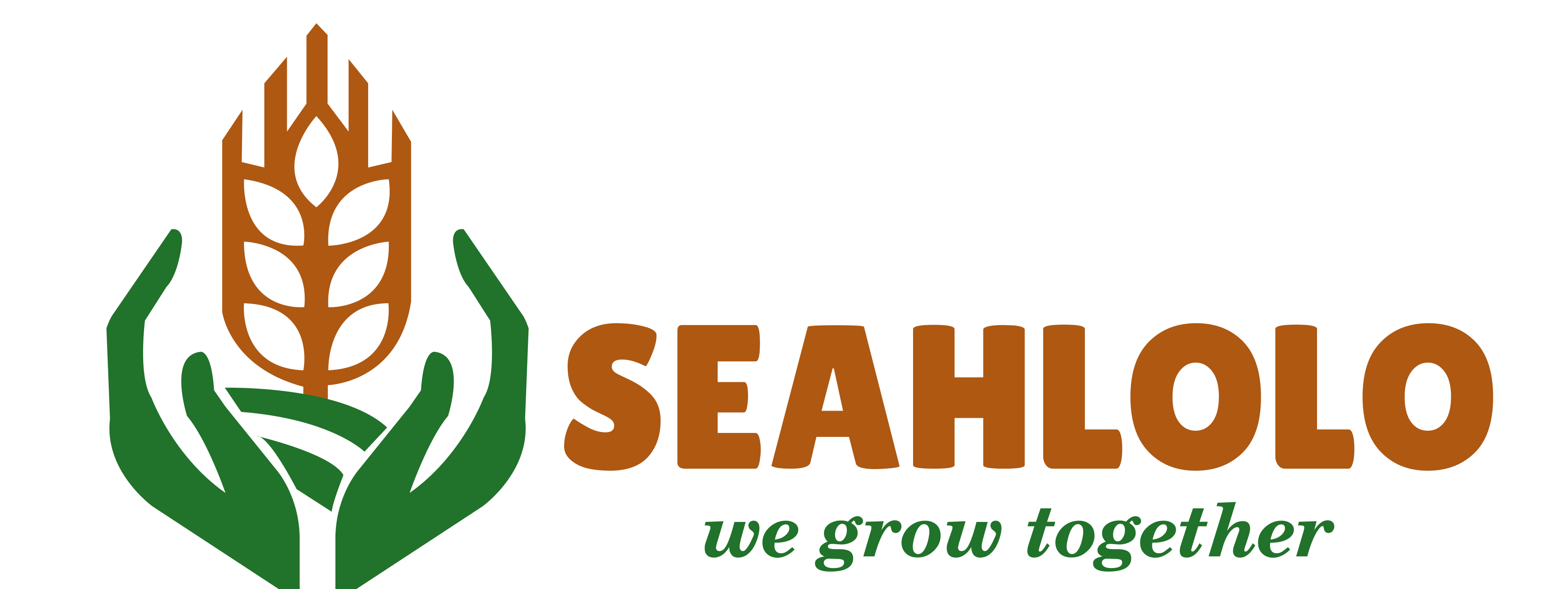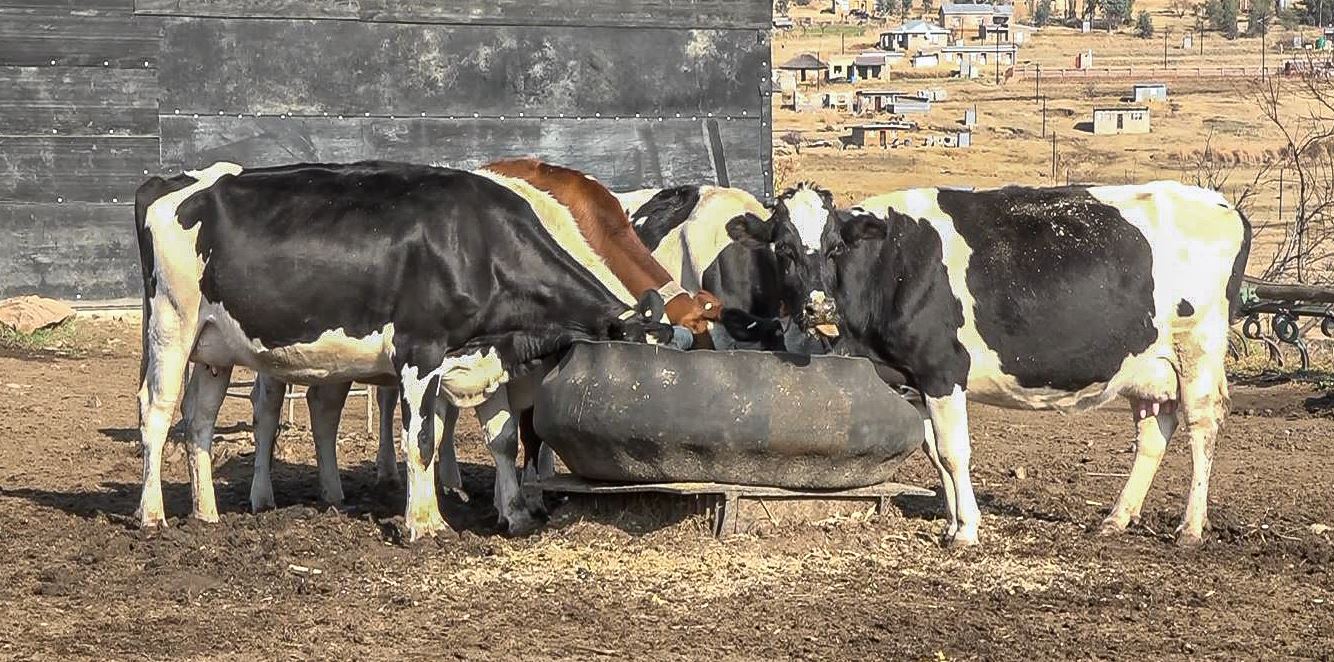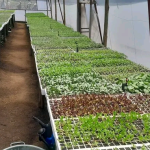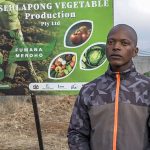![]()
By Seahlolo Reporter
For Marefiloe Pitso, founder of Moshemane Dairy Farm, farming is no longer just a livelihood; it is a legacy in the making for her teenage daughter, Refiloe.
Situated in Serutle Tlhakaneng, Butha-Buthe, Marefiloe is a poised, determined woman who is challenging the norm and excelling in crafting a legacy, one that is nourished daily by milk, hard work, and love.
“I am building this farm for my daughter,” Marefiloe says softly, her tone, a blend of pride and determination.
“It is my way of ensuring that she inherits something sustainable, something she can grow beyond me with.”
Before Moshemane Farm became a thriving dairy enterprise, Marefiloe was known as a skilled grain farmer.
For decades, she produced sorghum, yellow maize and wheat on a medium scale.
Yet, recurring post-harvest losses gnawed at her profits.
“What drove me into dairy production was the loss I kept suffering from after every harvest. I needed a way to recover value from my crops and dairy farming offered that solution.”
Her logic was clear and practical: grain production could feed livestock, particularly dairy cattle, animals known for their heavy feed requirements.
“In my view, dairy cattle consume a lot of feed and since I already had the grains, it made perfect business sense,” she says.
Marefiloe began modestly with two dairy cows, but her first attempt was short-lived.
“I failed on a high note,” she admits with a smile.
“I bought the animals without proper research or consultation. I simply did not know enough about dairy management.”
Rather than giving up, she learned.
Selling the initial cows but keeping their calves, she started anew, this time leaning on advice and mentorship from other dairy farmers. With patience and humility, she nurtured the calves into maturity, her first major success.
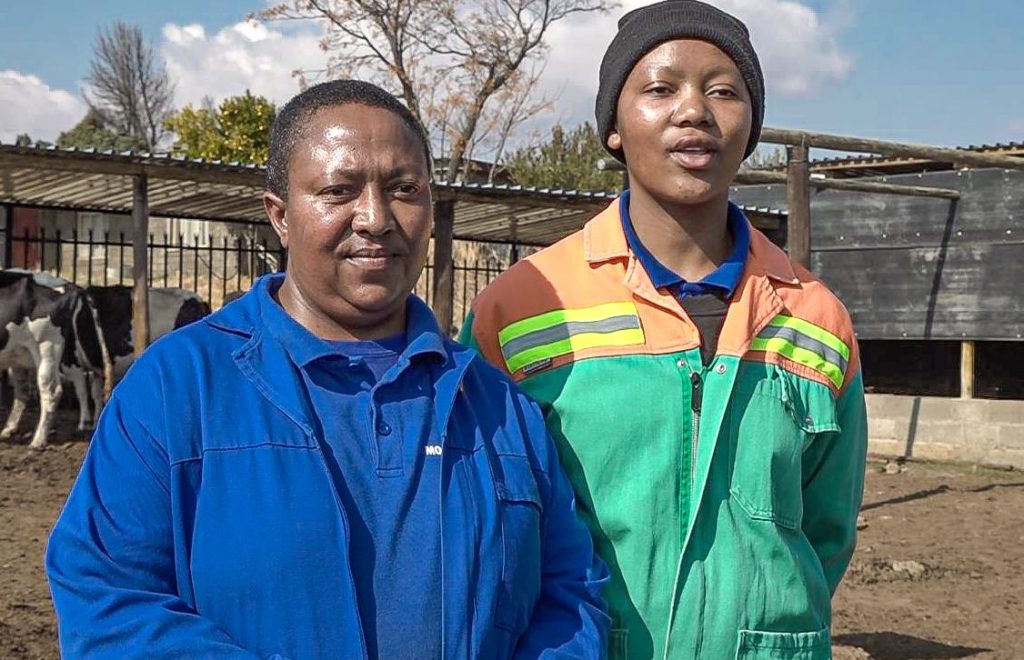
“The calves became my teachers. By the time they reproduced, I had learned how to manage feeding, disease control, and the general wellbeing of dairy cattle,” she reflects.
From two cows, her herd expanded to four milking cows, producing more milk than she anticipated.
“That’s when I realised how high the demand for milk truly is,” she says.
Her main buyer, Lesotho Dairy Products became a consistent partner.
“They have never once said milk supply is enough,” she chuckles.
In addition to commercial supply, Moshemane Farm has become a community supplier, serving local households and schools.
“Our doors are always open for milk sales,” Marefiloe says proudly.
With demand steadily rising, she saw the need to scale up.
Just as the business was finding its rhythm, tragedy struck. In 2024, Moshemane Farm lost three of its four dairy cows, two to bloat and one to a foot condition.
“It was devastating. I had plans to milk nine cows that year, but it all fell apart,” Marefiloe recalls.
Yet, even in loss, she remained steadfast noting one fundamental lesson that one can’t farm alone without employees to help in the operations.
Today, Moshemane Farm employs two full-time workers and three seasonal labourers, mostly during feed production seasons.
“It gives me joy to know that I am contributing to livelihoods in my community,” she adds.
Her turning point came in 2022, when she applied for and won a Smallholder Agricultural Development Project Phase II (SADP II) grant.
“It was my first application, and I qualified,” she says with visible gratitude.
She notes that the SADP II win came at a time when her dreams needed revival.
Through the grant, Moshemane Farm received a water supply system, site fencing and a large multifunctional kraal serving as a storage area, milking station and cattle shelter.
The grant also provided five pregnant dairy cows, greatly improving milk production.
“Losing the three cows had set me back, but SADP II doubled my herd and boosted production immediately. Now, I see profit margins widening and envision milking at least 20 cows in the near future,” she says.
The additional infrastructure and improved management practices have allowed her to stabilise production and expand her customer base.
“SADP II shortened the journey toward my dream,” Marefiloe says.
Looking ahead, Marefiloe plans to relocate the farm to a larger space and also expand land currently used for feed production.
“With the growth we are experiencing, I see myself transforming part of my crop fields into a full dairy farm,” she says.
Her long-term vision is to diversify production into cheese, yogurt and sour milk, turning Moshemane Farm into a full dairy processing hub.
“When that happens, I expect to create even more jobs, especially for women and youth in my community,” she says.
Her dream goes beyond profitability, “I see myself living on the farm, managing the cows closely and producing pure, quality milk and milk products,” she shares.
Marefiloe is passionate about mentoring others, particularly women. “I always tell women—don’t fear large animals or the kraal,” she insists. “There’s good income and dignity in dairy farming.”
She believes women can break traditional boundaries and build wealth through agriculture.
She advices, “Start small, even with crossbreeds. Learn animal management first before moving to expensive breeds.”
She also mentors several young farmers, some of whom have gone on to become SADP II beneficiaries themselves.
“It’s fulfilling to see the youth following in my footsteps,” she says.
Beyond funding, Marefiloe credits SADP II and the Ministry of Agriculture, Food Security and Nutrition for continuous support through extension services, training workshops and study tours.
“The workshops have been eye-opening. We have learned about feed formulation, animal nutrition, bookkeeping, marketing and disease management, all knowledge I am using to perfect this dream.”
Through Nqabeni Resource Centre and SADP II, she’s built a strong network of veterinarians and fellow farmers.
“I am more confident and informed now than ever before,” she notes.
Moshemane Farm, she says, is not just a business but a vehicle that is bridging generations in her clan line.
Her daughter, Refiloe, already takes an active role during school holidays.
“Helping my mother on the farm teaches me responsibility,” Refiloe says shyly.
“I now understand the value of what she’s building and one day, I want to make it even bigger.”
Marefiloe says each bucket of milk represents not just income but continuity, resilience and love.
“I am building more than a farm. I am building a beautiful future.”
Sponsored by

